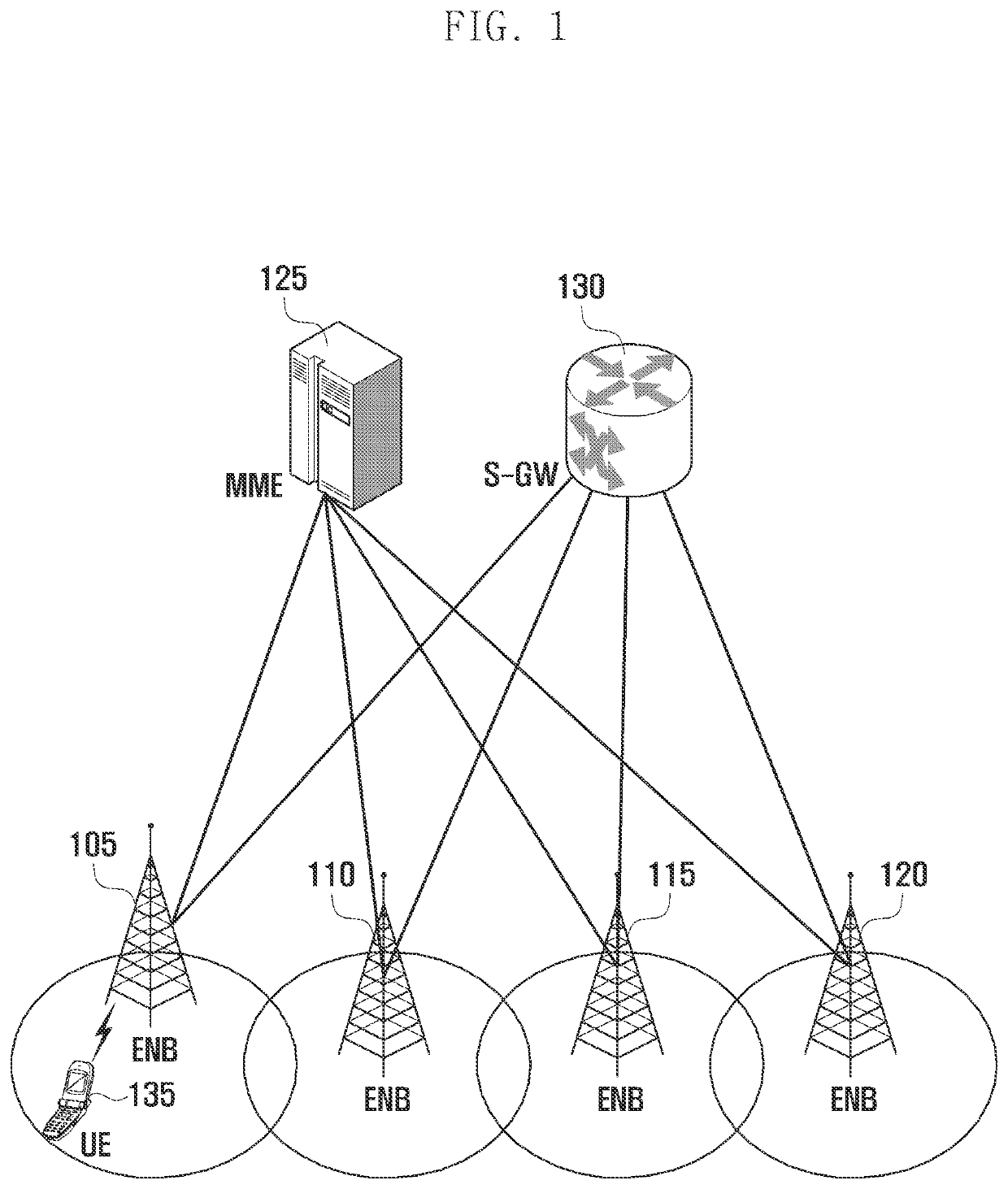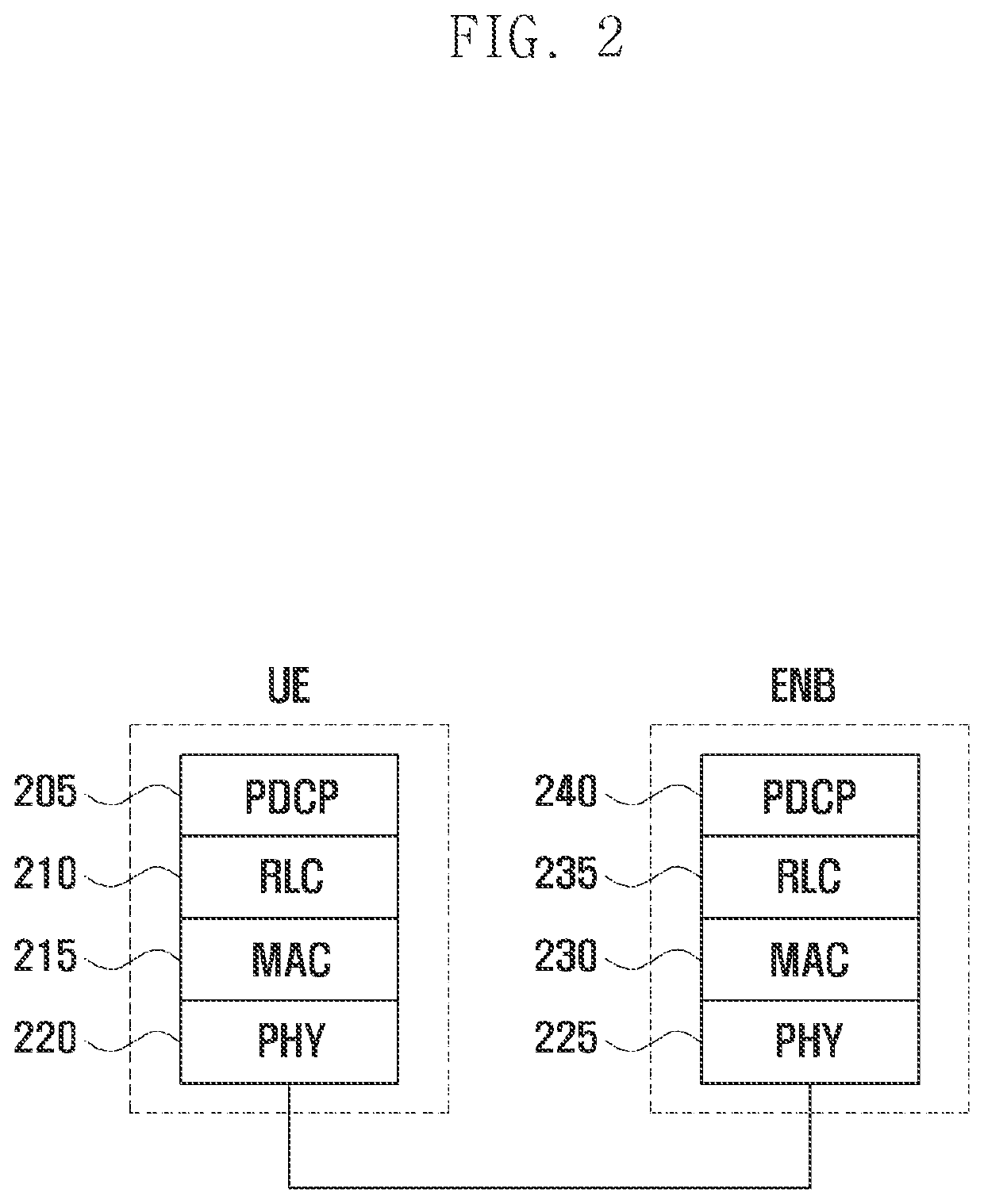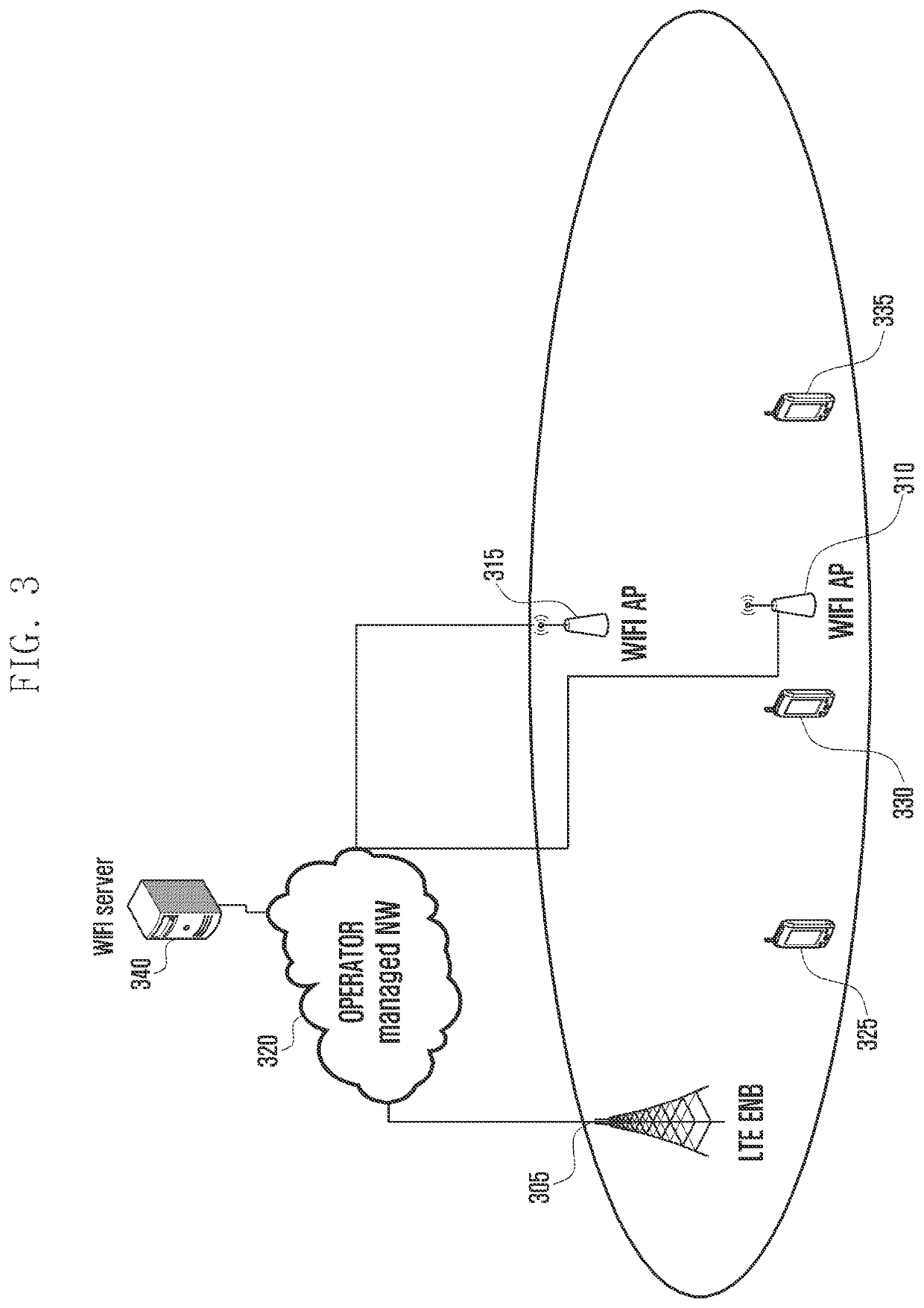Method for offloading traffic by means of wireless LAN in mobile communications system and apparatus therefor
a wireless lan and mobile communication technology, applied in the direction of network traffic/resource management, wireless communication, connection management, etc., can solve the problems of inability to effectively support the offloading of user traffic, the power consumption of user equipment is always turned, and the wlan power of the user equipment needs to be always turned. to minimize the phenomenon of service interruption
- Summary
- Abstract
- Description
- Claims
- Application Information
AI Technical Summary
Benefits of technology
Problems solved by technology
Method used
Image
Examples
first embodiment
[0064]FIG. 4 is a flow diagram illustrating an example of bearer level WIFI offload according to an embodiment of the present invention.
[0065]First, in step 415, an ENB 410 transmits system information to a UE 405 located in the coverage of the ENB 410. At this time, when a WIFI network accessible to the coverage of the ENB 410 exists, the ENB 410 provides WIFI-related information to the UE 405 through the system information. When the WIFI-related information is referred to as “common WIFI information,” the common WIFI information may include the elements below.
[0066][Common WIFI Information][0067]Whether there exists an accessible WIFI AP within an area of a serving cell[0068]WIFI channel information[0069]WIFI AP location information (e.g., location information or Global Positioning System (GPS) coordinate information with an LTE radio signal received signal strength as a reference)[0070]A list of neighboring frequencies at which an accessible WIFI network exists (or Service Set ID...
second embodiment
[0191]FIG. 10 is a view explaining a DRX operation of a UE.
[0192]The DRX operation corresponds to a scheme in which the UE periodically turns on a receiver at predetermined time points and checks whether a scheduling is performed, thereby minimizing the power consumption of the UE. The operation in which the UE turns on the receiver and checks whether a scheduling is performed is expressed as “the UE is in an active time,” and the UE monitors a downlink control channel in the active time. A downlink control channel is referred to as a “Physical Downlink Control CHannel (PDCCH),” through which a downlink scheduling command, which is for allocating a downlink transmission resource and includes other pieces of control information necessary to receive downlink data, or an uplink scheduling command, which is for allocating an uplink transmission resource and includes other pieces of control information necessary to transmit uplink data, is transmitted. In the standards, the downlink sche...
third embodiment
[0222]A Carrier Aggregation (CA) technique, in which multiple serving cells are aggregated for one UE in order to increase the transmission speed (data rate) of a UE, has been introduced.
[0223]FIG. 16 is a view explaining CA.
[0224]Referring to FIG. 16, one ENB typically transmits and receives multiple carriers in different frequency bands. For example, when an ENB 1605 transmits a carrier 1615 having a downlink center frequency f1 and a carrier having a downlink center frequency f31610, one UE transmits / receives data through one of the two carriers according to the related art. However, a UE 1630 having carrier aggregation capability may transmit / receive data by simultaneously using multiple carriers. The ENB 1605 may allocate more carriers to the UE 1630, which has carrier aggregation capability, according to the situation, and thereby may increase the transmission speed of the UE 1630. The aggregation of downlink carriers and uplink carriers, that one ENB transmits and receives as...
PUM
 Login to View More
Login to View More Abstract
Description
Claims
Application Information
 Login to View More
Login to View More - R&D
- Intellectual Property
- Life Sciences
- Materials
- Tech Scout
- Unparalleled Data Quality
- Higher Quality Content
- 60% Fewer Hallucinations
Browse by: Latest US Patents, China's latest patents, Technical Efficacy Thesaurus, Application Domain, Technology Topic, Popular Technical Reports.
© 2025 PatSnap. All rights reserved.Legal|Privacy policy|Modern Slavery Act Transparency Statement|Sitemap|About US| Contact US: help@patsnap.com



